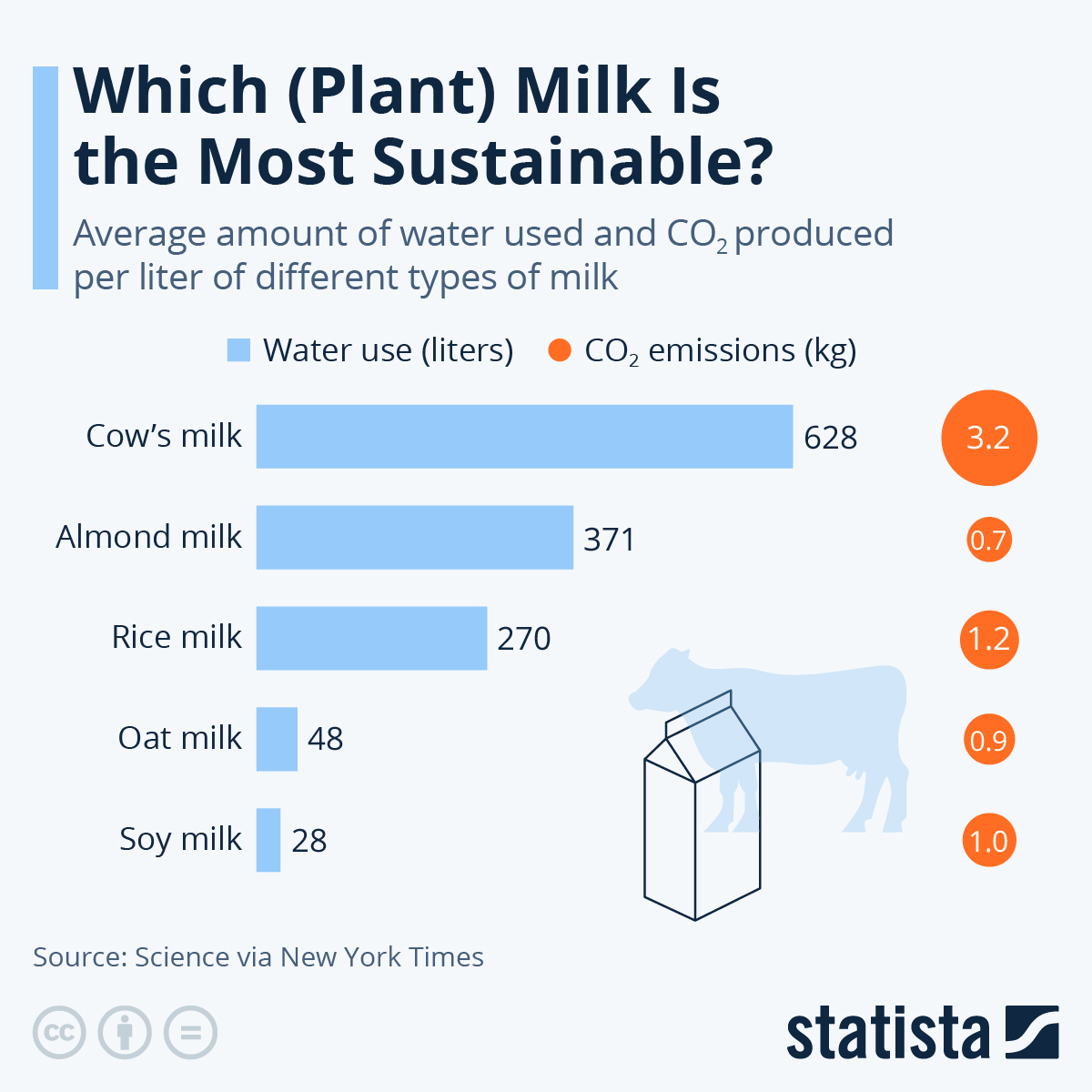Comparing milks?
How do you choose milk? Do you worry about sustainability, toxin dose, taste - or toxins? We found these charts interesting and quite surprising.
628 litres
〰️
628 litres 〰️
This is how much water is needed to produce one litre of cow’s milk.
For one litre of almond milk - 371 litres of water are needed. However - in the US - most almonds are grown in California - a naturally dry state. Hmm.
And if you’re concerned about climate change - producing one litre of milk pumps 3.2 kilograms of carbon dioxide into the atmosphere.
Soy milk and oat milk on the other hand are much more environmentally friendly at just 1.0 kg and 0.9 kg respectively.
Which milk has the last toxins?
A totally different question - with remarkably different answers.
So many milks - so many toxins!
Each of these food toxins cause changes in the small intestine as they pass through. They can interfere with enzymes, disrupt absorption - even pierce the gut lining.
Hello Leaky Gut. We don’t say to avoid them all. Just be aware.
Oat milk contains GLUTEN
Cow’s milk contains CASEIN & LACTOSE
Soy milk carries PHYTIC ACID & LECTINS
Rice milk contains LECTINS (didn’t know that did you?)
Cashew milk contains PHYTATES
Coconut milk contains PHYTIC ACID
Pea milk contains LECTINS
Almond milk contains PHYTATES and some lectins
Coconut milk contains PHYTATES
How to eliminate food toxins and avoid disease? Try foodintol® LoTox Express
And which type of plant milk is the most popular in the US?
This is basically a measure of which plant milk tastes best for creaminess and texture.





